In traditional agriculture, plants get the nutrients they need to grow from the soil. Hydroponics, on the other hand, as a revolutionary way of growing, breaks this limitation by immersing plant roots directly in a nutrient-rich water solution for efficient and controlled plant growth. And at the center of it all is the hydroponic nutrient solution.
What Is Hydroponics?
Hydroponics is a growing method that does not use soil, but instead provides nutrients to plants through a nutrient solution dissolved in water. The roots of plants in a hydroponic system are in direct contact with a water solution containing dissolved nutrients, and the roots grow by absorbing water and nutrients. This method works for a wide variety of plants, including vegetables, herbs, flowers, and even certain fruits.
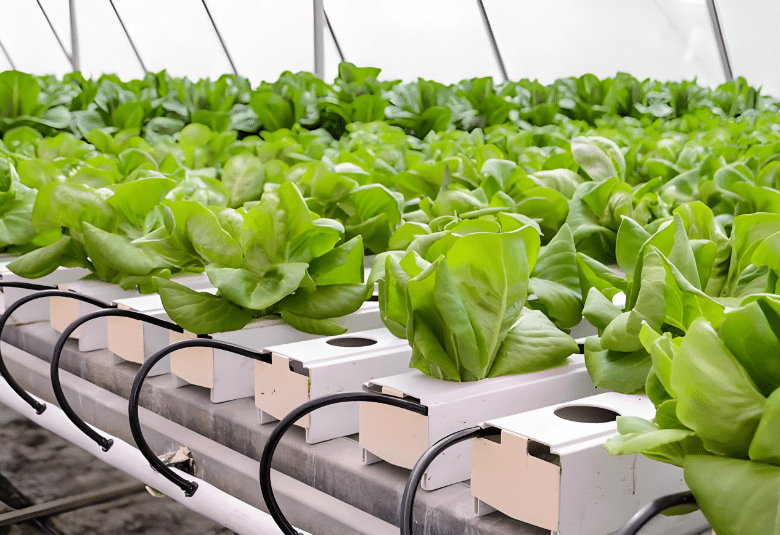
Growing Hydroponically Without Using A Nutrient Solution?
Hydroponic growing relies on a nutrient solution to provide essential nutrients to the plants, without which hydroponics could not sustain normal plant growth. Nutrient solution is the core component of hydroponic growing, ensuring plants can absorb the minerals, trace elements, and water they need for healthy growth. Without the use of nutrient solutions, plants will not be able to get enough nutrients, affecting their growth and development.
Nutrients Used In Hydroponics
The basic nutrients used in hydroponics can be summarized by the term NPK, which stands for Nitrogen, Phosphorus and Potassium, the three macronutrients necessary for plant growth.
- Nitrogen (N) – Healthy Leaf Growth
In hydroponic systems, nitrogen promotes vigorous plant growth, especially in the early stages of plant growth, and helps plants to quickly establish a healthy leaf system. - Phosphorus (P) – Root Development
Phosphorus mainly contributes to the development of the plant’s root system and to the ripening of flowers and fruits. Phosphorus is a key element in energy conversion, helping plants to store and utilize energy, and is essential for healthy plant growth. - Potassium (K) – plant health
Potassium has a number of important roles in plants, including helping them to resist disease and drought, and increasing their resistance to stress. It contributes to protein synthesis, water regulation and plays a role in the synthesis of sugars and starch in plants.
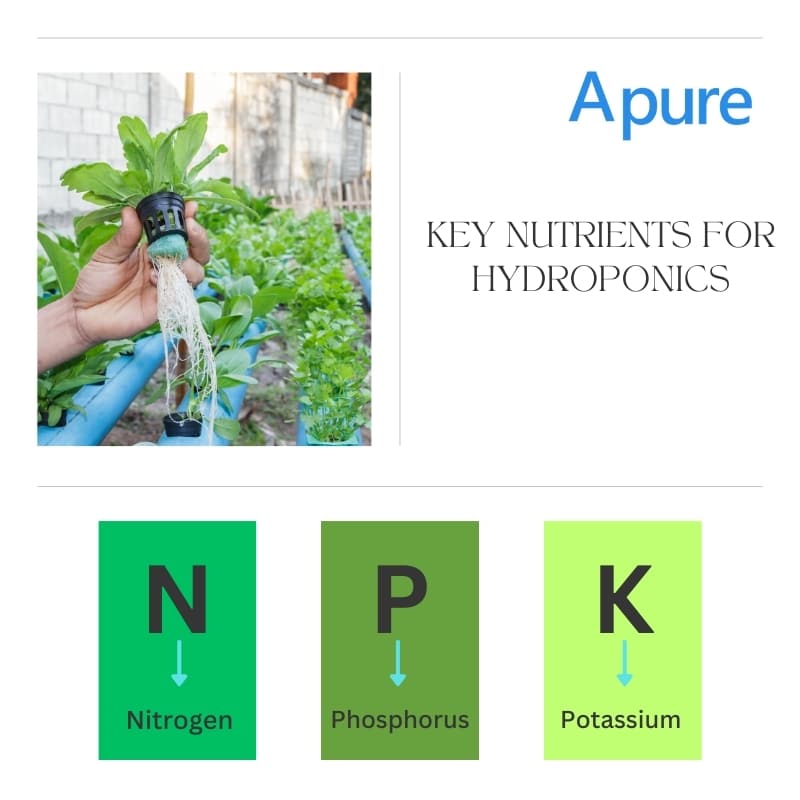
Secondary Nutrient
- Calcium (Ca) – Cell Wall Structure
Calcium is an integral part of the plant cell wall and helps maintain its stability and structure. It is essential for cell division and growth in plants. - Magnesium (Mg) – Chlorophyll production
Magnesium is the central component of chlorophyll and is essential for photosynthesis in plants. Magnesium helps plants to utilize sunlight for energy. - Sulfur (S) – Protein Synthesis
Sulfur is a component of amino acids and proteins in plants and is essential for growth, metabolism, and cell division. Sulfur is also involved in the activation of enzymes in the plant and promotes disease resistance and nutrient synthesis.
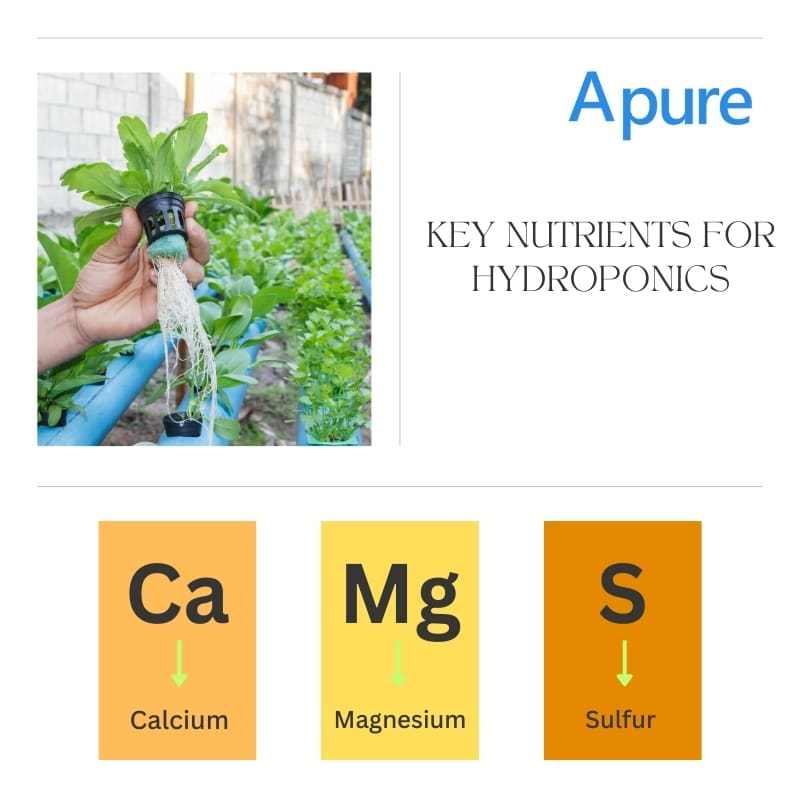
How to Measure Hydroponic Nutrient Solution?
Use of Specialized NPK Testing Instruments
- Multi-Parameter Water Analyzers: Some high-end multi-parameter analyzers (such as the Apure series) can measure several water quality parameters simultaneously, including NPK levels.
- Portable NPK Detectors: Some portable devices are specifically designed to measure NPK levels in water. These devices use electrodes or sensors to detect nutrients dissolved in water.
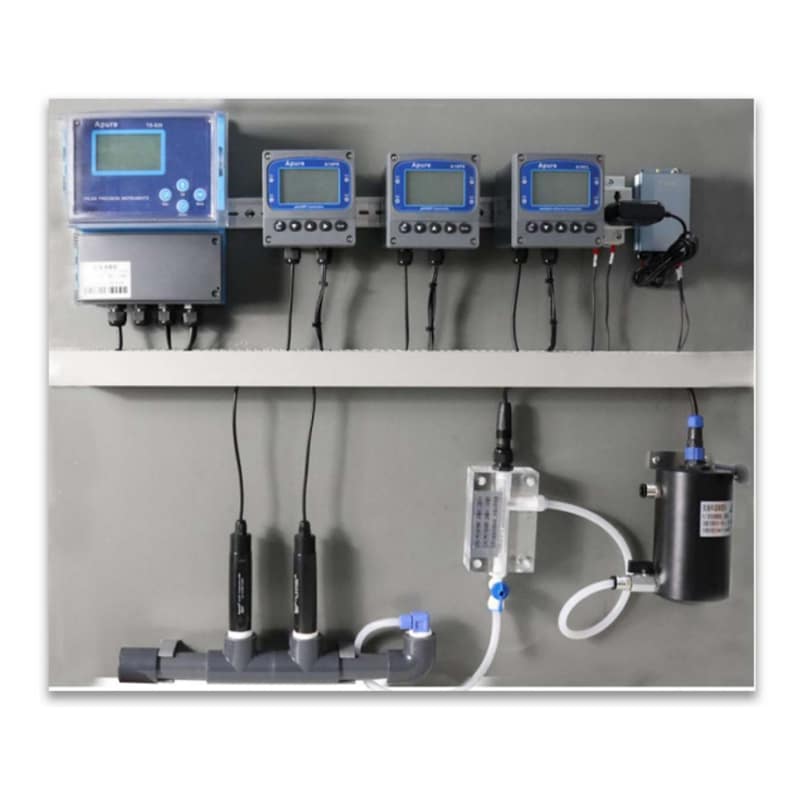
Use of Ion Selective Electrodes (ISE)
Ion-selective electrodes (ISEs) are a common method used to measure the concentration of a single ion in water. These electrodes are specifically designed to detect different ions such as nitrogen (NO₃-), phosphorus (PO₄³-), and potassium (K⁺). By measuring the change in potential in solution, the concentration of the corresponding ion can be determined.
Use of Photometric Methods
Photometry is a common method of water quality analysis in which the concentration of certain elements in a water sample is determined by measuring the intensity of the color produced by the reaction of the element with a reagent. It usually requires the use of a spectrophotometer.
Water Quality Monitoring Instruments
The use of appropriate water quality monitoring instruments can greatly improve the accuracy and efficiency of measurements.
- Apure A30 hydroponics orp ph controller: Suitable for testing NPK, pH, dissolved oxygen, conductivity and many other parameters in water, helping hydroponic growers to monitor the quality of nutrient solution comprehensively.
- Apure pH/ORP Monitor: For accurate pH measurement and can be combined with other testing tools for NPK measurement.
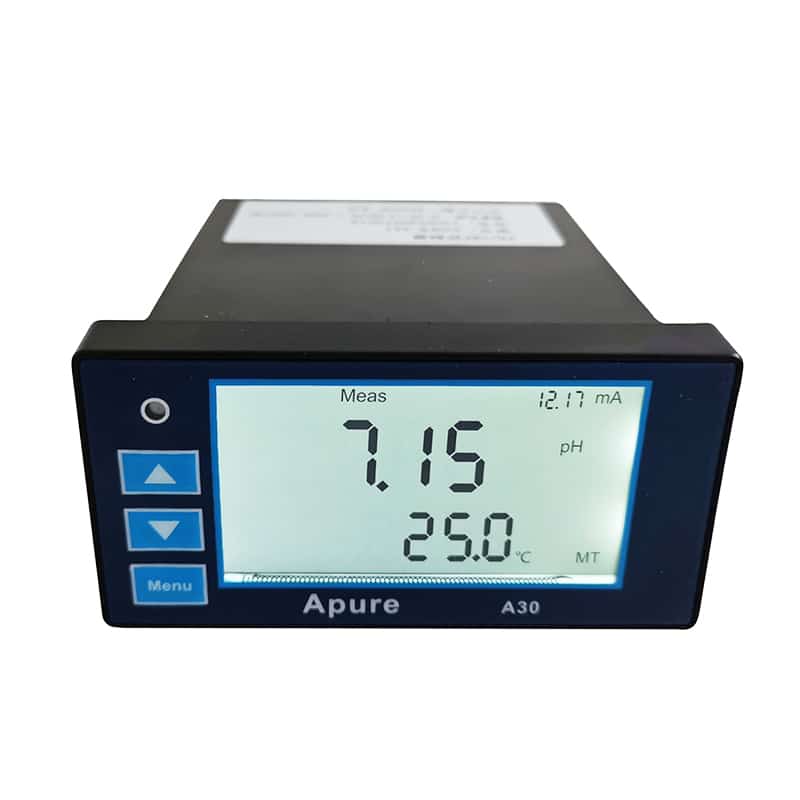
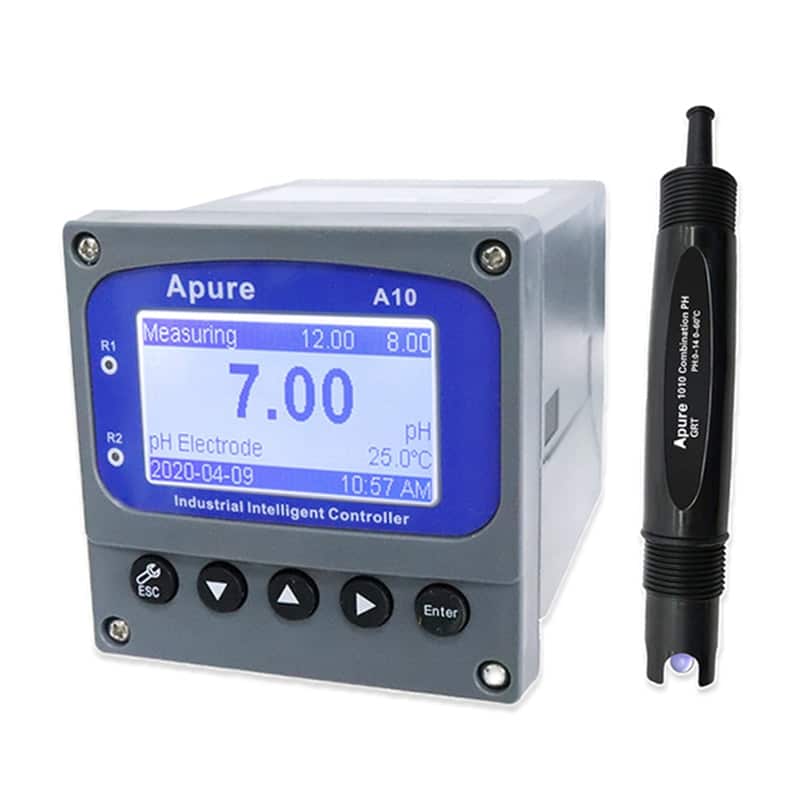
How do I Prepare The Nutrients Used in Hydroponics?
Select and confirm the required hydroponic nutrient salts and concentrations
Hydroponic nutrient solutions usually consist of a few basic water-soluble nutrient salts. You can choose from ready-made hydroponic nutrient solutions or make your own according to the needs of your plants. The concentration of macronutrients and micronutrients required is then determined according to the growth stage and needs of the plant.
Mixing the nutrient solution
Dissolve the selected nutrient salts in the appropriate amount of water in the desired proportion to make a hydroponic nutrient solution. Check the pH of the hydroponic solution. The ideal pH range is usually between 5.5 and 6.5. Use an acid or base to adjust the pH.
Check and monitor water quality
Measure pH: Regularly monitor the pH of your hydroponic solution to make sure it is within the proper range. If the pH is too high or too low, the plants may not be able to absorb nutrients effectively.
Conductivity Measurements: Electrical Conductivity can help you check the concentration of Total Dissolved Solids in a solution. A high EC value means that there is a high concentration of nutrients in the water, while a low EC value means that there is a low concentration. Ideal EC values are usually between 1.5-3.0 mS/cm, adjusted for plant needs and growth stage.
Importance of Water Sources in Hydroponics
The quality of the water source plays a vital role in a hydroponic system by providing not only water but also essential nutrients to the plants. If the water source is contaminated or unsuitable, plant growth will be limited. Ensuring that the purity, pH, dissolved oxygen and EC values of the water source are within the appropriate range, and that it is regularly monitored and treated, is the key to successful hydroponics. Through scientific water management, hydroponic growers can provide a stable, healthy growing environment for their plants, resulting in higher yields and better quality.
Summary
Hydroponic nutrient solution is the core of hydroponics technology, while precise monitoring and scientific formulation are the keys to ensure the success of hydroponics. Through in-depth understanding of plant nutritional requirements and the use of specialized instrumentation, we can create an ideal growing environment for plants to harvest healthy, high-yield and high-quality produce.
As one of the leaders in water quality monitoring, Apure offers a wide range of highly accurate and versatile water quality analyzers covering key parameters such as pH, DO, conductivity, chlorine and more. Whether it is for hydroponics, drinking water monitoring, wastewater treatment or industrial applications, Apure can provide you with customized solutions to help you achieve more efficient and reliable water quality management.
